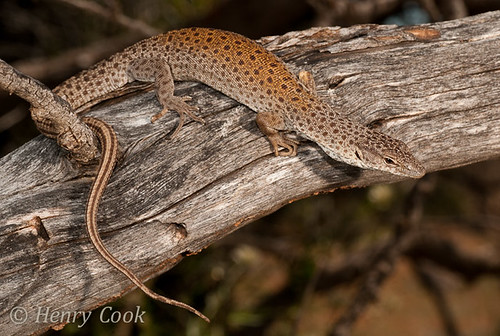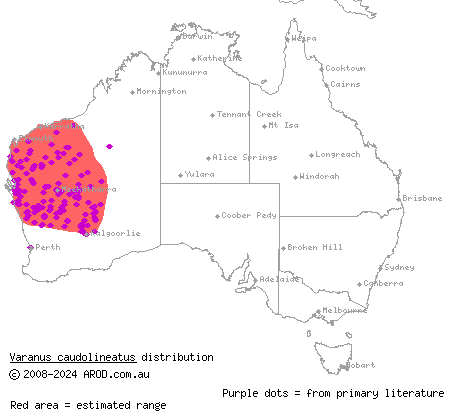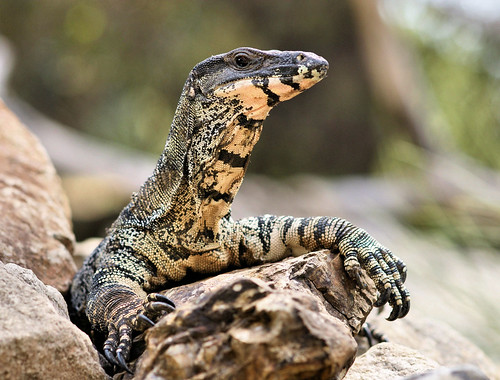Post by Ceratodromeus on Jan 15, 2016 0:57:16 GMT 5

Scientific classification
Kingdom: Animalia
Phylum: Chordata
Suborder: Vertebrata
Class: Sauropsida
Order: Squamata
Suborder: Lacertilia
Family: Varanidae
Genus: Varanus
Subgenus: V.(Odatria)
Species: V.caudolineatus
Description
This species of pygmy monitor can be distinguished from other members of the Odatria subgenus by it's leopard like spots, and the distinguishable stripes that run from near the base of the tail to the tip, which gives the species its common name. Standard body coloration is a dusky brown or light grey, with the leopard like spots being a dark brown in coloration. A large proportion of this goannas' back is an orange-brown coloration, and the lower jaw, throat, and underbelly are a creamy white-grey coloration. This is a small species, with individuals measuring anywhere from 60-131mm(2.3-5.1in) in snout-vent length, with correspondingly long tails{1,2}; Which would put total body length measurements at approximately 120-232mm(4.7-9.1in).

Geographic range
This species can be found in Central Western Australia, in localities such as Meekatharra. It is found frequently in areas with red soils, and these goannas are known to inhabit Mulga and Eucalyptus tree hollows. They are often encountered hidingunder dead and/ or rottingbark of these trees. Because of this, they are thought to be semi arboreal in nature{3}. They do not extend into the heart of Australia, which makes identification of the allopatric Pygmy Mulga monitor(V.[odartaria]gilleni) easier.

Dietary habits
Despite their semi arboreal nature, these lizards forage for food on the ground. Despite being a smaller species, the stripe tailed goanna is a generalistic feeder like almost every member of Varanidae. The bulk of their diet consists of scorpions, spiders, cicadas, cockroaches, and small lizards such as the beaked gecko (Rhynchoedura ornata). Moths have also been recorded in the species' diet.{4,5} The remains of gecko tails, and only the tails, have been recorded in the stripe tailed goannas' stomach. This suggests that, like other Pygmy monitor, this particular species will chase down and harvest the tails of small gecko species.

Reproduction
Both sexes are thought to attain sexual maturity at a shout vent length measurement of approximately 81mm(3.18in){4} With mating occuring July-August, with females laying 4-5 eggs in December{1}. Clutch size is determinate on the size of the maternal female varanid, with larger females consequently laying larger clutches.
References
{1}Pianka, ERIC R. "Notes on the biology of." Varanus caudolineatus (1969).
{2} Thompson, Graham G., and Philip C. Withers. "Comparative morphology of Western Australian varanid lizards(squamata: Varanidae)." Journal of Morphology 233.2 (1997): 127-152.
{3} Thompson, Graham. "Daily movement patterns and habitat preferences of Varanus caudolineatus (Reptilia: Varanidae)." Wildl. Res 20 (1993): 227-231.
{4} Pianka, ERIC R. "Comparative ecology of Varanus in the Great Victoria desert." Australian Journal of Ecology 19.4 (1994): 395-408.
{5}Losos, JONATHAN B., and HARRY W. Greene. "Ecological and evolutionary implications of diet in monitor lizards." Biological Journal of the Linnean Society 35.4 (1988): 379-407.





